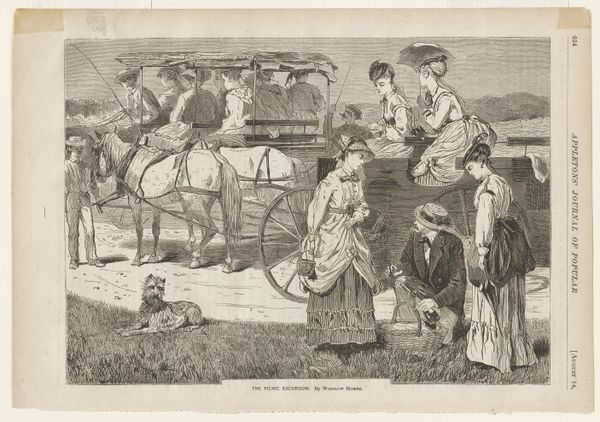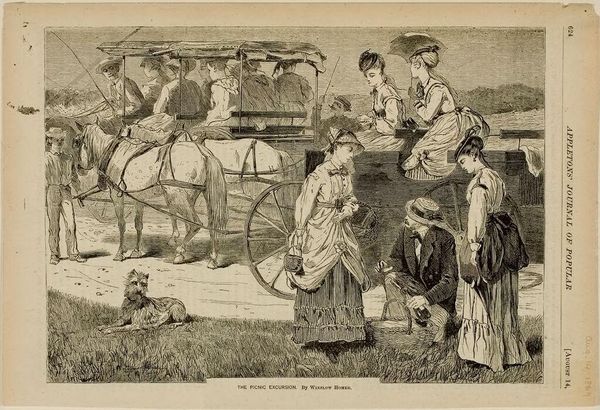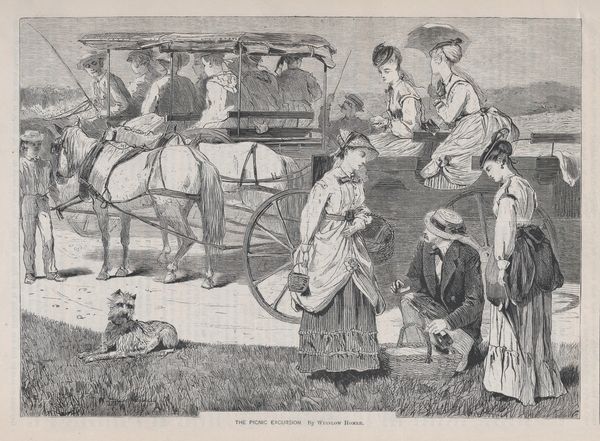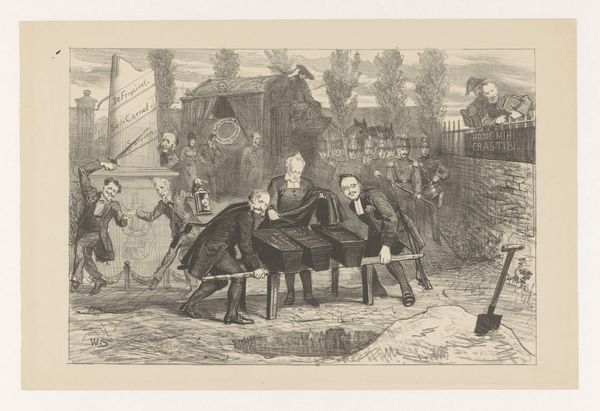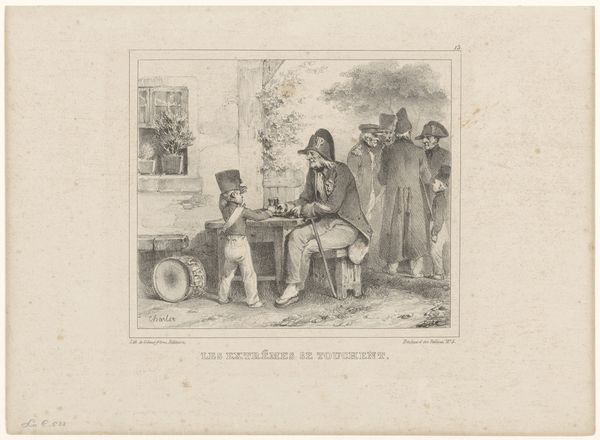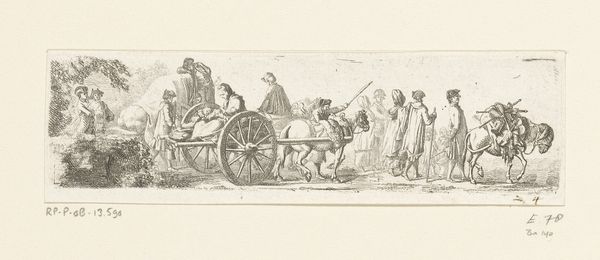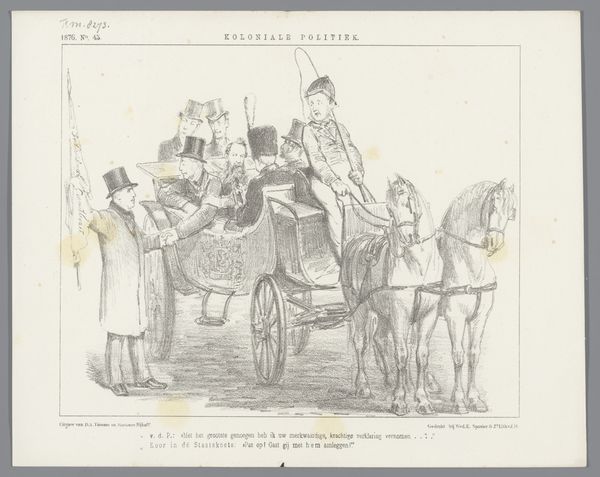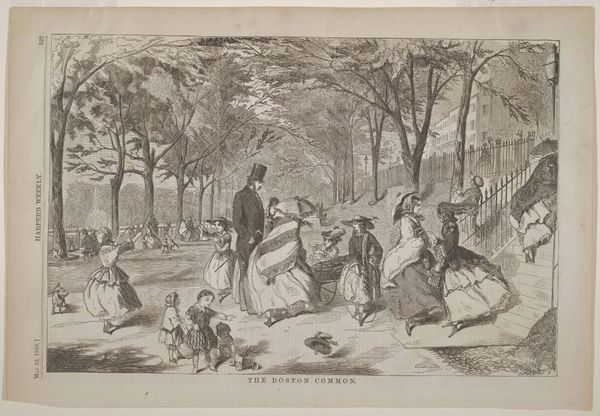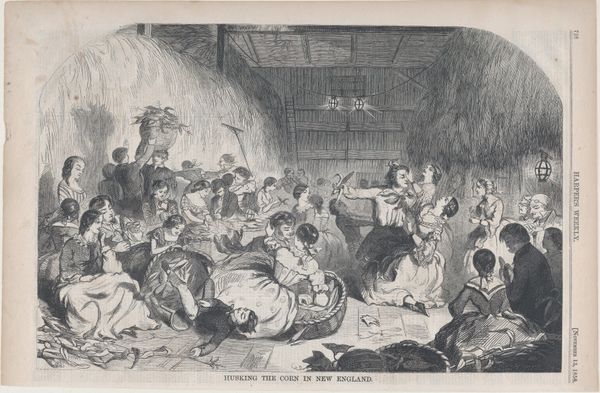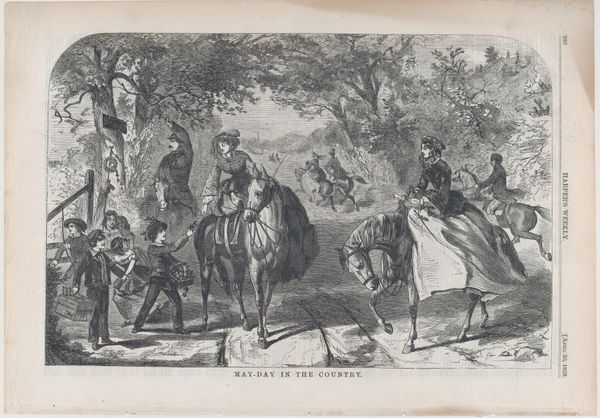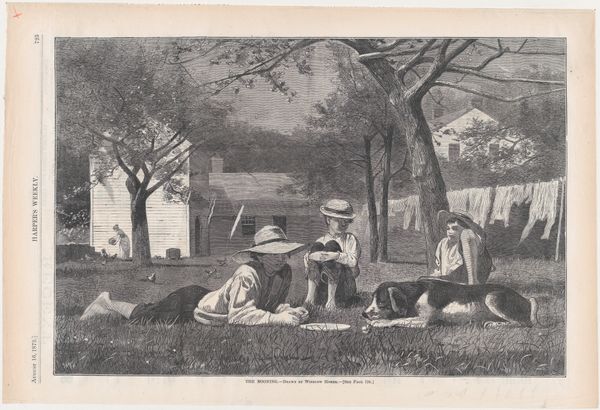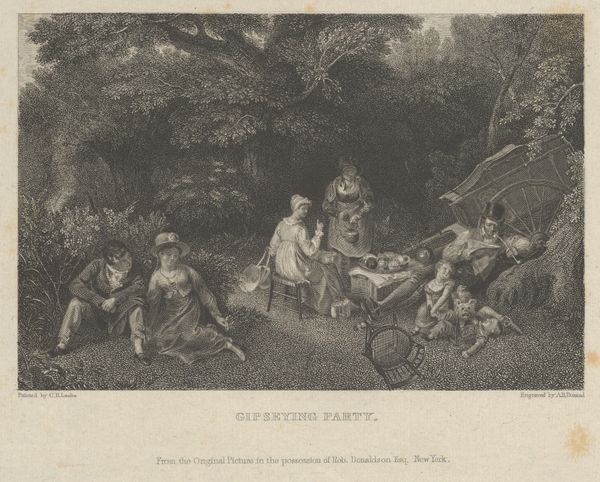
drawing, print, woodcut
#
drawing
#
narrative-art
# print
#
landscape
#
old-timey
#
woodcut
#
united-states
#
genre-painting
#
academic-art
Dimensions: 6 9/16 x 9 3/16 in. (16.67 x 23.34 cm) (image)7 5/8 x 10 15/16 in. (19.37 x 27.78 cm) (sheet)
Copyright: Public Domain
Curator: Winslow Homer's woodcut, "The Picnic Excursion," created in 1869, captures a scene of leisure, now residing here at the Minneapolis Institute of Art. Editor: It evokes such a sense of structured amusement; everything seems posed. The horse, the people...almost too prim for a picnic. Curator: The print provides a fascinating snapshot into gender dynamics and social class in post-Civil War America. We see women in elaborate dresses, while the men occupy positions of service or playful folly, blindfolded on the grass. The choice of a woodcut printmaking technique would make this accessible for mass consumption through publications. How does that affect the art historical significance in your opinion? Editor: Precisely. The medium here is crucial, transforming a genre scene into widely disseminated cultural artifact. The material—wood, ink, paper—facilitates the representation and reinforces prevailing ideals around class and recreation, effectively branding leisure. But it also reflects skilled labor in creating this intricate design by hand. The craft itself becomes part of the narrative, even though the mass-produced aspect hints at its commodification, no? Curator: I agree; understanding it as part of Appleton's Journal is essential. These were images crafted not just for viewing, but also for the reinforcing societal values of gender and race through sentimentalized depictions of leisure. It also provides an avenue to disseminate ideas regarding womanhood, and whiteness. Consider, too, who had access to leisure and whose labor afforded them that time off. Editor: Absolutely. We need to acknowledge what is presented here as a commodity is actually reliant upon many other production modes that were less visible and were happening away from these idealized places for relaxation that were likely highly manicured through other labor that goes unseen. Curator: Viewing “The Picnic Excursion” encourages critical analysis on whose experiences and voices are prioritized when telling the story of America’s past, highlighting those structural inequalities that are still happening to this day. Editor: This focus on medium helps me better consider not just its artistic message but broader structures influencing culture through reproducible materials and practices.
Comments
No comments
Be the first to comment and join the conversation on the ultimate creative platform.
